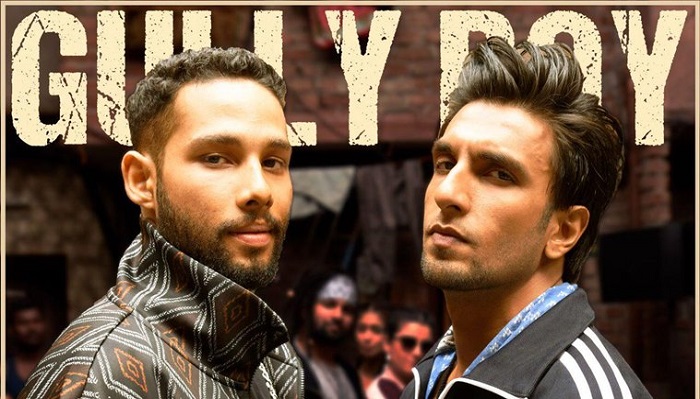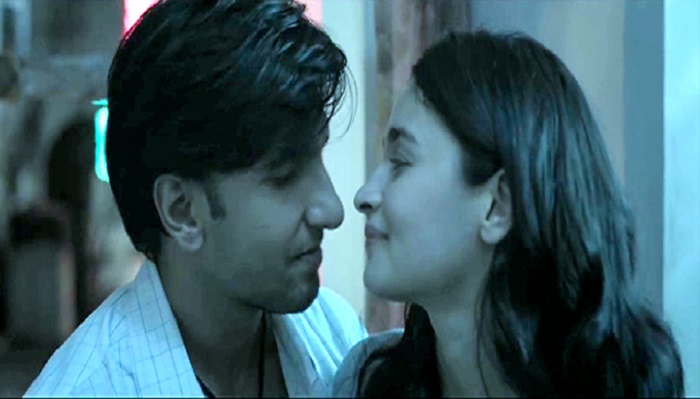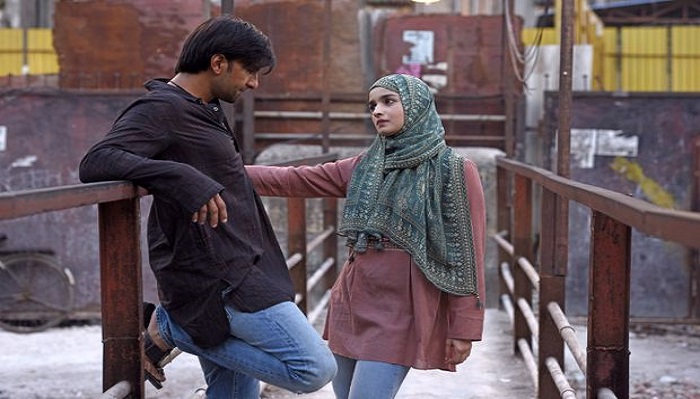Through bambaiya vernacular, the clandestine operation of motor theft and Murad’s critique of the superficiality of the rap song playing in the stolen car, the opening scene of Gully Boy itself sets the tone for the rest of the movie. The tenor and tension in the sequence lay open some of the pressing themes that Zoya Akhtar successfully attempts to encapsulate in the scenes and explores over the course of the movie. It’s the rapt critique of the rap scene at the beginning where we see our gully boy begin to steadily acquaint himself with the form of music that gives voice to his strife, struggle, upheavals, and awakening. It’s his contention with the heretofore smuttiness of the rap scene that he believes can be so much more. The movie elapses over a rhythm that has you buzzing with a deep fluster of emotions.
Some might call it a mere 8-mile-style underdog tale of a coming-of-age slum-dweller while others will deem it a celebration of the simmering hip-hop subculture but this movie covers so much ground that it is rather reductive to cram it all into a nutshell. Oddly enough, it is rather the breaking open of the nutshell in poetic fireworks that sees the humanity of intrepid characters whose vulnerabilities are endearingly translatable as strengths. The rock-bottom of those characters is strung with an elaborate springboard.
Whether it is Murad played by Ranveer Singh finding his friend’s actions disagreeable, his inner seething at the inability to comfort the crying daughter of the boss he chauffeurs or his fallibility when he feels attracted to women other than the one he is committed to, we see a man whose life is stacked against the odds. He discovers the rap scene and beholds in his eyes what he perceives as his calling despite being lambasted by his own father and family for not falling in line with their dreary perception of life.
 He dares to pursue what we see as his stunning thirst for rapping which is further galvanised by the rejoinder he hits his
He dares to pursue what we see as his stunning thirst for rapping which is further galvanised by the rejoinder he hits his
discouraging father with. “I might not be able to change my dreams to match them with my reality but I will change my reality itself to measure it up with my passion”
In this brilliantly woven tapestry by Akhtar, we see a gorgeous contrast of abject poverty meeting affluence. Murad being mentored in the art of fusing the tempo with poetry unloads his pains and inner struggles on a mic in his first ever recording that is shot in the veritable gully he hails from. In this gully, he played, smoked, robbed, relented, studied, dreamt, loved and did everything that sums up his complex life. His myriad experiences of chauffeuring the rich, seething at his father’s domestic abuse and struggling through exams become the basis for the rap-songs that instantly find resonance.
His graffiti squiggles about the bare minimum also mention internet which serves as the conduit for rapping his way into glory. It’s the internet that finds him his mentor. It’s the internet where he finds his beat-expert musicians. And it’s finally the internet that takes him closer to his dreams. Choke artist is bolstered through time and practice as he resolves to upend his miserable life through self-belief. Turning up the spunk, Safeena played by Alia Bhatt regales with her no tolerance policy for anyone trying to usurp what she thinks of as hers.

Whilst she is capable of smashing beer bottles on women who potentially threaten her relationship with Murad, the aspiring surgeon is also seen to have the soft empathy to understand and support Murad’s current predicaments and goals. Reassuring him in his moments of doubt, Safeena emerges as an equally powerful and formidable character that blazes through our hearts with her feisty antics.
Torn asunder by socioeconomic backgrounds, the lovers sustain their relationship through thick and thin in the movie as Murad endeavors to defy the raging odds by signing up and winning the final rap battle that transforms his life.
The paying off of his rebellion against the obstacles life lobs at him is the catharsis that leaves you feeling inspired. At occasional bursts and sometimes broader strokes, you see the simplicity and ease with which Akhtar smashes the society’s brittle beauty standards. Graffiti art- an artform of rebellion is again employed to depict how bulimic models are no stars to emulate whilst fairness is not the ultimate standard of beauty. The subtle shots at the patriarchal toxicity of the family also offer deeper insights that Zoya masterfully spills in the screenplay.
VFX of the movie
Screenplay looks heavily enhanced by the VFX shots worked upon by Pixel Digital Studios. However one might struggle to discern places at which VFX has played a role which is again a victory of the VFX artists as they have made it look so seamless. The obvious scenes that rendered themselves to the art of VFX would be ‘Meri Gully Mein’ song sequences, rooftop sequences and some of the chase scenes.

To make the character appear a bit more rustic, there could be a role of a bit of CG and the chroma scenes (Green Screen) might have played an instrumental role in the long and wide top shots of the city. The graffiti scrawls on the models and the overhead Mumbai roads also look very much VFX-laden.
We will keep you posted on the VFX aspect of the movie.

